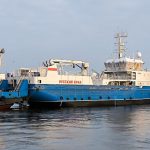In spite of big restructure a few years ago the fishermen of Commonwealth fishery are not happy because of the high Australian dollar and high fuel costs. The record shows that the value of Commonwealth fisheries production peaked at $582 million in 2000-01, but fell 48 per cent to $304 million in 2006-07. The Australian Bureau of Agricultural and Resource Economics informed that the impact of high fuels costs and rising Australian dollar is very affirmative.
ABARE executive director Phillip Glyde told that the relatively high Australian dollar had made Australian exports more expensive and seafood imports cheaper. He also said that increases in fuel prices had also affected the cost of fishing, as fuel can account for a big part of a vessel’s costs. In ABARE’s Fishery economic status report 2007 Glyde mentioned that with rising costs and a deteriorating competitive position, financial returns from operating in the industry have been negatively affected.
The Australia Fisheries Management Authority has managed the Commonwealth area, which consists of 20 fisheries, which exports mainly rock lobster, pearls, abalone, prawns and tuna. It is told that Commonwealth fisheries account for 10-15 per cent of Australia’s total fisheries and aquaculture sector and were worth $2.2 billion in 2006-07. Glyde opined that these fell at respective annual rates of 7.4 per cent and 5.4 per cent from 1999-00 to 2006-07.
It is evident that the value of aquaculture production fell at an average annual rate of 1.1 per cent over the same period, reaching $823 million. The southern and eastern scalefish and shark (SESS) fishery generated the highest value of production of all Commonwealth fisheries, told BARE.








